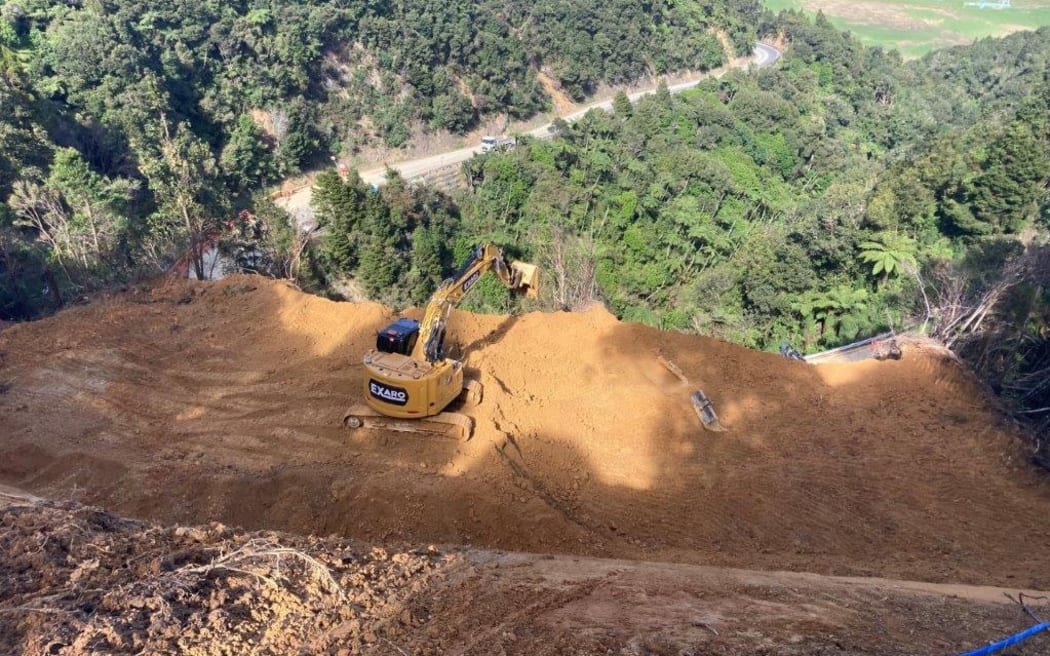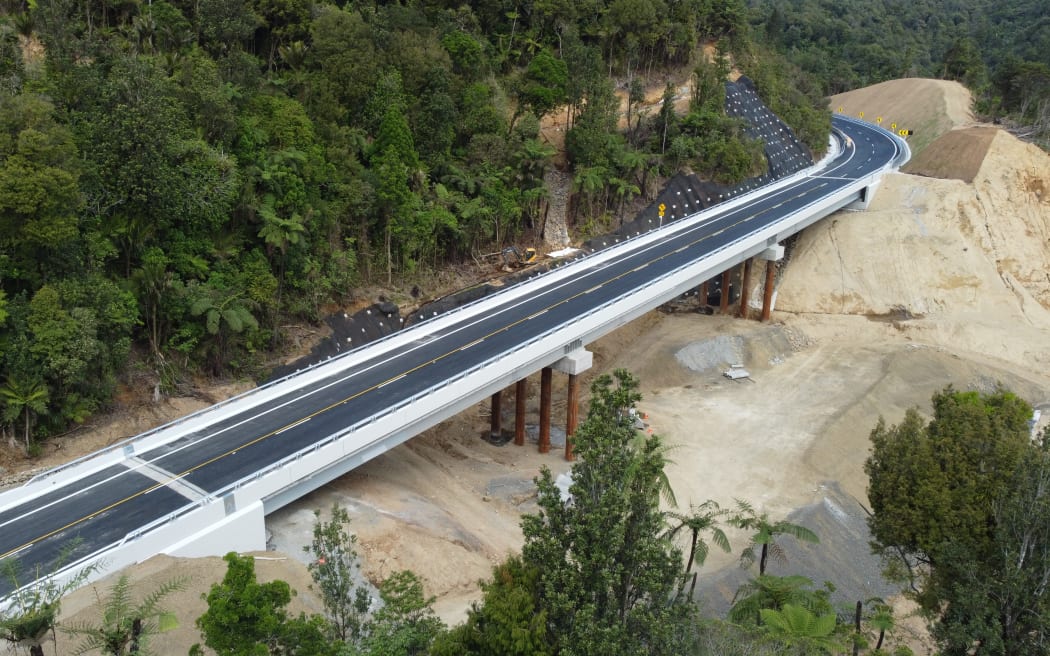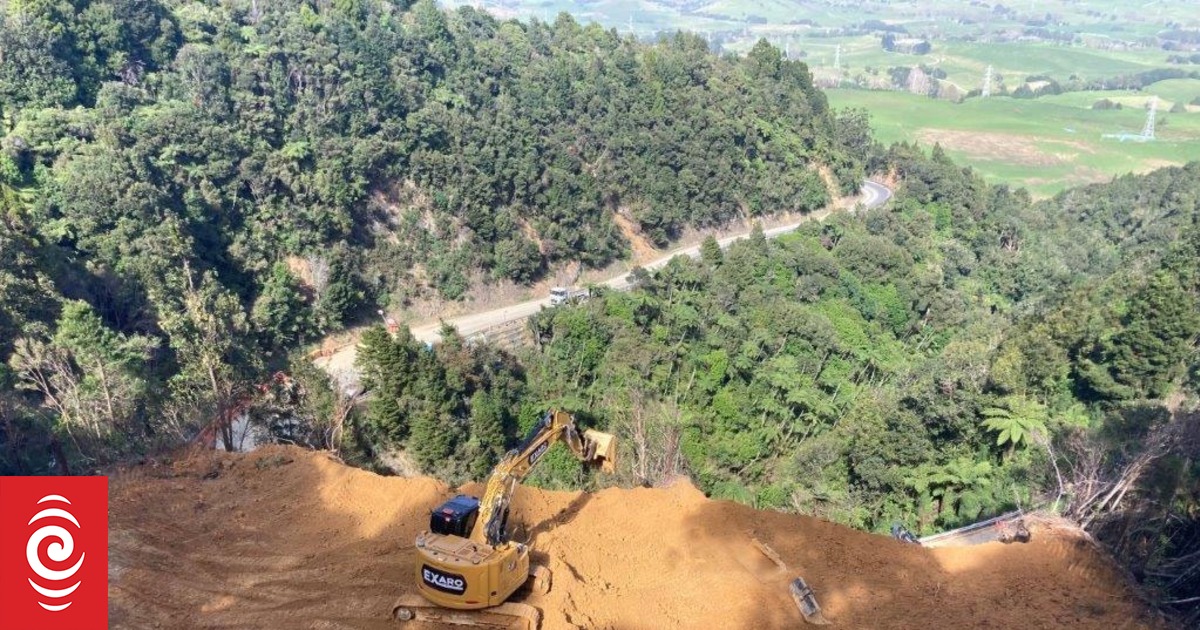A new report on the success of restoring access to the Coromandel after a slip has lessons for future projects – but is anyone listening?

Huge slips on the Brynderwyn Hills were caused by Cyclone Gabrielle.
Photo: NZTA/Supplied
The tight and twisty route north through the Brynderwyn Hills closes on Monday as work begins to make the State Highway more resilient to floods and storms.
It’s not ideal. There are three alternative routes, and the track for trucks through Dargaville will add an hour to their journeys.
But as the country continues to be hit by fierce weather, the number of landslides wiping out key routes is only likely to increase.
Amongst the talk of a huge infrastructure deficit in the country and the billions we will have to spend, there is a good news story.
When part of State Highway 25A was wiped out in last year’s storms, destroying the direct route to the eastern side of the Coromandel Peninsula, a decision was made to replace the road with a bridge.

The State Highway 25A Taparahi Bridge reopened on 20 December 2023 after a massive landslip destroyed part of the road during the January storms.
Photo: NZTA Waka Kotahi / James Davis
The Taparahi Bridge opened three months earlier than expected, and was on budget.
Now the successes of that project have been highlighted in a report by Infrastructure New Zealand, including its estimate that the early restored access led to increased tourism spending of $69.3 million, and increased GDP in the region by $85.88 million.
“There’s nothing earth-shattering in this report,” says the organisation’s CEO, Nick Leggett. “What is surprising is that we know this stuff, and we haven’t seen the change.”
Infrastructure NZ is holding two conferences for the construction industry on what was learnt from SH25A. One is in Tauranga and one in Auckland – the latter has sold out. The report has also been presented to the government, and Leggett says it’s particularly relevant given the new government’s stated intention to deliver infrastructure faster and more efficiently.
“It’s a good news story for the affected communities on the Coromandel. They said that when this road washed out in January 2023, the impact was worse than Covid. So to reinstate a key bit of infrastructure which involved a bridge span replacing a road in about 10 months – the usual project time was 18 to 24 months – that’s something that’s worth highlighting. When you dig a little bit deeper under the bonnet, what you find is there are some reasons for that.”
Some of those reasons boiled down to getting everyone involved strongly committed to the job; some were down to emergency planning powers. The tender process was lightning-fast, and council consents were applied for after the work was done – an independent construction verifier was on site to make sure everything was done properly.
But other gains were more specific – for example the job needed steel plate for bridge beams. Some had been imported for a project already in construction and were readily available, so they were diverted for immediate use. The beams were replaced in time for the other project to continue on schedule.
Leggett says assembling and deploying the right project team, with the skills, experience, and culture to get the job done, was vital.

Photo: NZTA Waka Kotahi
The head of that project team is now leading the work to fix the Brynderwyns.
“The new bridge on State Highway 25 was obviously a huge success,” says NZTA’s director of regional relationships for Auckland and Northland, Steve Mutton.
“We’ve taken the lessons learned from that project – and others that we’ve done throughout New Zealand – to make sure that we build that into the Brynderwyns work.”
The Brynderwyn project will only be a short-term fix – five to 10 years – before a more permanent route can be worked out.
On The Detail today he explains the difficulties of working on this stretch of State Highway 1, and what the road closure will achieve.
The detour routes, including the scenic road for tourists through Mangawhai and Waipu, and heavy freight route through Dargaville that will add an hour to truck trips, are on NZTA’s website.
Check out how to listen to and follow The Detail here.
You can also stay up-to-date by liking us on Facebook or following us on Twitter.



